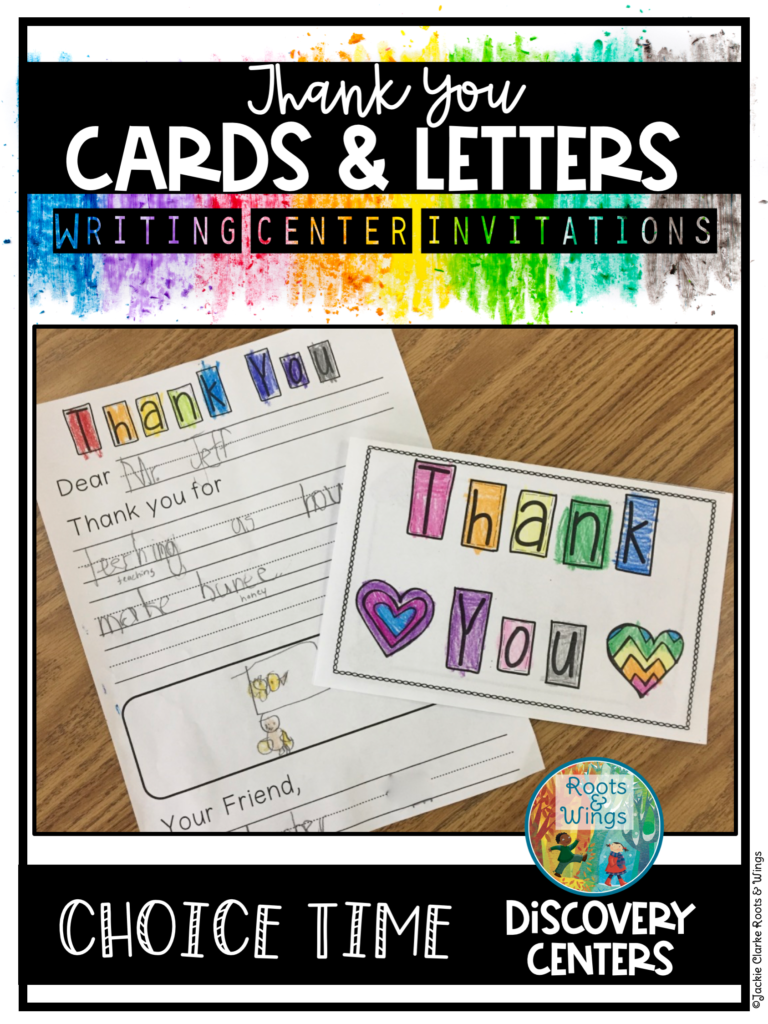In the very basic sense, helping young children understand gratitude, begins with teaching them to say thank you.
Unfortunately, these two little words don’t show up as often as I would like.
Each year, I’m made aware, when this happens…
I’m handing out papers and the first 15 kiddos take the paper without saying anything in return. Student 16, says, “thank you.” I acknowledge their good manners and then the next 7 children also offer a, “thank you.”
Sound familiar?
So how do we build those “thank you muscles” in our kiddos? Here are a few ideas for you to try:
1) Check Your Thank You’s
Notice how often you are using these words in your language with children. I discovered, that while I always respond to the children, I don’t always tack on a “thank you.” So now I try to make an effort to remember these important words whenever they bring me the little “bits and bobs” they find on the floor, draw me sweet pictures, or pass on a parent note.
2) What Does it Really Mean?
Children often think that saying thank you means you like what someone has given or done for you. It’s important for them to understand that this won’t always be the case and that this phrase really means, I notice and appreciate what you have done/given.
Help them understand the difference by role playing using puppets. Have fun with it by incorporating unusual and outrageous gifts that they might not be too crazy about receiving.
3) Sign It
Teach children how to say thank you in sign language. Challenge them to use the sign at least once each day for a week to say thank you to someone.
4) Thank You Around the World
Help children understand that people of all languages express gratitude by teaching them how to say thank you in other languages. Each morning, choose a new language, teach them the word, and invite them to use it throughout the day to show their appreciation for one another.
Also, check out Mahalo, by Laurie Berkner for a great Hawaiian thank you song!
5) Thank You Notes

6) Thankful Thursday
Set aside one morning meeting share for children to consider who they might need to thank that week. Create a special thank you rock to pass around as they share their thankful thoughts.
7) Table Talk
Let children make a “touchstone” craft that they can use for their Thanksgiving table talk with families. You can grab this FREEBIE here!

8) Sharing Time
9) Thank You Anyway
In the story, I Want My Hat Back, by Jon Klassen, the bear asks the other animals if they have seen his hat. When the answer is no, he politely responds, “Thank you anyway.” Great book to introduce this phrase and its meaning to children.
Hope you found something you can use!
Please know that I’m thankful for your time as well as your ongoing dedication to the wellbeing of children.
Thanks for stopping by!

This post contains affiliate links. Roots & Wings is a participant in the Amazon Services LLC Associates Program, an affiliate advertising program designed to provide a means for sites to earn advertising fees by advertising and linking to Amazon.com.
If you found this post helpful and think others might too, please consider sharing it on your favorite social media platform!







 The Last Day of Kindergarten
The Last Day of Kindergarten Kindergarten Classroom Cheers for a Positive Environment
Kindergarten Classroom Cheers for a Positive Environment Get-to-Know-You Activities for the First Weeks of Kindergarten
Get-to-Know-You Activities for the First Weeks of Kindergarten Making a Plan for the Covid Friendly Classroom
Making a Plan for the Covid Friendly Classroom